Silverstone Decathlon DA650: A modular alternative
by Christoph Katzer on August 8, 2007 12:30 AM EST- Posted in
- Cases/Cooling/PSUs
Temperatures, Fan Speed, and Acoustics
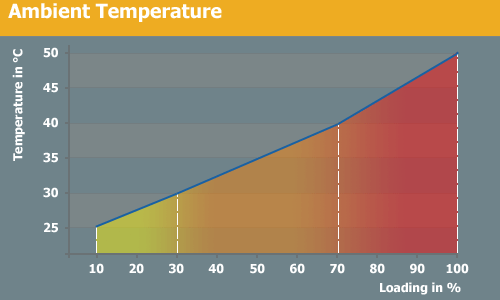
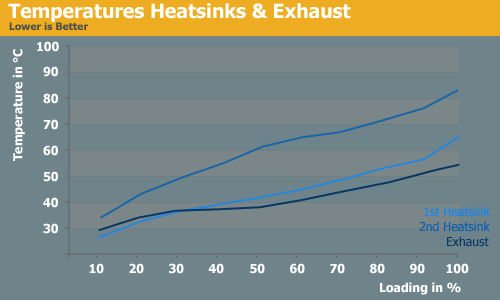
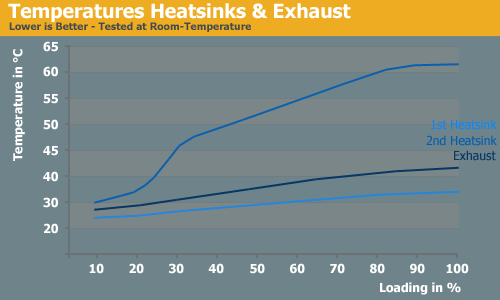
The secondary heatsink gets quite hot, which as mentioned is a result of the small volume/surface area. The bigger heatsink on the primary side performs much better. It's interesting to note that the exhaust temperatures are actually hotter than the primary heatsink in our room temperature testing.
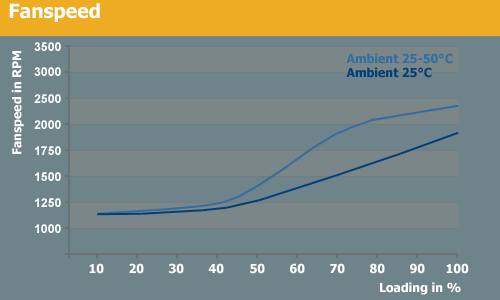
The power supply does a good job at adjusting fans speed in response to increasing temperatures. With a 40-50°C ambient temperature the fan starts spinning faster much earlier. At normal room temperature the fan maxes out at 1900 RPM. Higher ambient temperature means faster rotational speeds, and with an ambient temperature of 50°C the fans reaches 2400 RPM in an attempt to get the PSU as much air as possible to help cool things down.
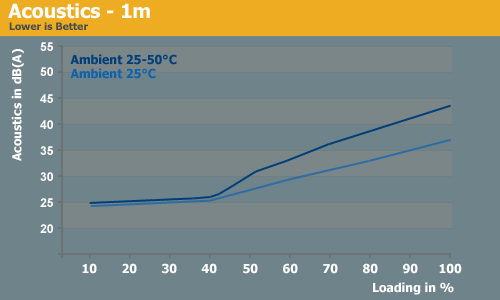
With a normal load this power supply should not be very audible in a PC system. It's not necessarily silent, but at room temperatures and moderate loads the fan only produces around 25dB(A) which is typically less than the noise other components produce. When it comes to loads of 400W and more, the power supply definitely isn't quiet anymore but that's to be expected. In a 25°C environment, maximum load results in a noise level of 36dB(A). If you happen to run in a hotter climate/environment, noise levels can reach as high as 44dB(A). However, that result is still pretty good in comparison to other competing power supplies.



The secondary heatsink gets quite hot, which as mentioned is a result of the small volume/surface area. The bigger heatsink on the primary side performs much better. It's interesting to note that the exhaust temperatures are actually hotter than the primary heatsink in our room temperature testing.

The power supply does a good job at adjusting fans speed in response to increasing temperatures. With a 40-50°C ambient temperature the fan starts spinning faster much earlier. At normal room temperature the fan maxes out at 1900 RPM. Higher ambient temperature means faster rotational speeds, and with an ambient temperature of 50°C the fans reaches 2400 RPM in an attempt to get the PSU as much air as possible to help cool things down.

With a normal load this power supply should not be very audible in a PC system. It's not necessarily silent, but at room temperatures and moderate loads the fan only produces around 25dB(A) which is typically less than the noise other components produce. When it comes to loads of 400W and more, the power supply definitely isn't quiet anymore but that's to be expected. In a 25°C environment, maximum load results in a noise level of 36dB(A). If you happen to run in a hotter climate/environment, noise levels can reach as high as 44dB(A). However, that result is still pretty good in comparison to other competing power supplies.










7 Comments
View All Comments
eetnoyer - Wednesday, August 8, 2007 - link
...reviews of power supplies for people who aren't building a quad SLI system and don't want to spend $100 and up?Christoph Katzer - Wednesday, August 22, 2007 - link
...patience.crimson117 - Wednesday, August 8, 2007 - link
Should change to:
mostlyprudent - Wednesday, August 8, 2007 - link
Perhaps my expectations are messed up, but I have yet to be impressed by any of the units reviewed thus far. Then again, when spending $150 to $200 for a PSU, I am going to set my sights very high.Super Nade - Wednesday, August 8, 2007 - link
They used 3 x Primary caps, which is more expensive than 1 450uF, but since they are in parallel, the ESR reduces significantly. Although this may have a minimum bearing on the proceedings (secondary side is more important), there is less stress on the PWM/switching transistors.I think you may have issues calibrating your setup, given that every single PSU you have reviewed seems to have larger than usual voltage drops.
yyrkoon - Wednesday, August 8, 2007 - link
Given this, and that the rails do not seem to be solid/heatsink is too small, I think the PC power and cooling PSU is still the better buy.Besides that PC Power and Cooling is a well respected PSU OEM, why even bother with something else in the same price range.
Who makes this PSU anyhow ? I know it is silverstone branded, but I am fairly certain they did not make it.
Super Nade - Wednesday, August 8, 2007 - link
Impervio Electronics Corp, Taiwan.